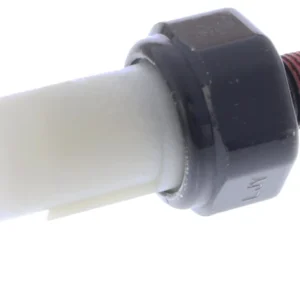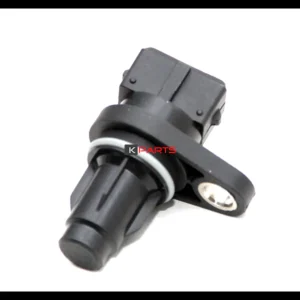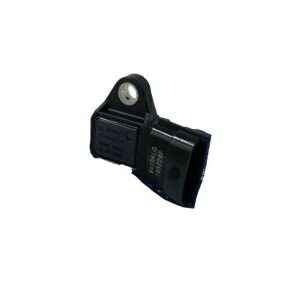Title: The Camshaft Sensor: Your Engine’s Watchful Eye
Introduction:
In the heart of every modern engine lies a sophisticated system of sensors and components working together to ensure optimal performance. Among these, the camshaft sensor stands out as a crucial component, playing a vital role in synchronizing engine operation and facilitating precise fuel delivery and ignition timing. Let’s explore the world of camshaft sensors, uncovering their function, significance, and the indispensable role they play in keeping your engine running smoothly.
Understanding Camshaft Sensors:
Camshaft sensors, also known as camshaft position sensors or CMP sensors, are electronic devices responsible for monitoring the position and speed of the camshaft(s) in an engine. They detect the rotational position of the camshaft(s) and provide this information to the engine control unit (ECU) or powertrain control module (PCM).
How Camshaft Sensors Work:
Camshaft sensors operate using various technologies, including Hall effect, magneto-resistive, and inductive sensors. Regardless of the technology used, the basic principle remains the same: as the camshaft rotates, the sensor detects the position of specially designed teeth or notches on the camshaft and generates electrical signals corresponding to the camshaft’s position. These signals are then transmitted to the ECU or PCM, which uses them to determine the precise timing of fuel injection, ignition timing, and valve operation.
Importance of Camshaft Sensors:
Camshaft sensors play a critical role in modern engine management systems for several reasons:
1. Timing and Synchronization: Camshaft sensors provide essential data to the ECU or PCM, allowing for precise synchronization of engine operation. By accurately detecting the position and speed of the camshaft(s), camshaft sensors ensure that fuel injection, ignition timing, and valve operation occur at the correct moment, optimizing engine performance and efficiency.
2. Misfire Detection: Camshaft sensors can also help detect engine misfires by monitoring variations in camshaft position. A sudden change in camshaft position without a corresponding change in crankshaft position may indicate a misfire or timing issue, prompting the ECU or PCM to take corrective action.
3. Variable Valve Timing (VVT): In engines equipped with variable valve timing systems, camshaft sensors play a crucial role in controlling valve timing and lift. By providing real-time data on camshaft position, camshaft sensors allow for precise adjustment of valve timing to optimize engine performance at different operating conditions.
4. Fault Diagnosis: Camshaft sensors are essential for diagnosing and troubleshooting engine-related issues. Faulty camshaft sensors can cause a variety of symptoms, including rough idling, engine stalling, and decreased performance. By monitoring camshaft sensor signals, technicians can pinpoint the source of the problem and make necessary repairs.
Maintenance and Replacement:
To ensure optimal engine performance and reliability, it’s essential to properly maintain camshaft sensors. Over time, camshaft sensors may become contaminated with dirt, oil, or other debris, leading to inaccurate readings or failure. Regular inspection and replacement of camshaft sensors as part of routine maintenance can help prevent issues and ensure proper function. Signs of a faulty camshaft sensor include difficulty starting the engine, rough idling, and illuminated check engine light.
Conclusion:
In conclusion, camshaft sensors may be small in size, but their impact on engine performance, efficiency, and reliability is significant. By providing crucial data on camshaft position and speed, camshaft sensors allow for precise engine control and synchronization, ensuring optimal performance under all operating conditions. So, the next time you turn the key and your engine springs to life, remember to thank the unsung hero quietly monitoring its every move – the camshaft sensor.
In stock (can be backordered)
$18,926.31
Title: The Camshaft Sensor: Your Engine’s Watchful Eye
Introduction:
In the heart of every modern engine lies a sophisticated system of sensors and components working together to ensure optimal performance. Among these, the camshaft sensor stands out as a crucial component, playing a vital role in synchronizing engine operation and facilitating precise fuel delivery and ignition timing. Let’s explore the world of camshaft sensors, uncovering their function, significance, and the indispensable role they play in keeping your engine running smoothly.
Understanding Camshaft Sensors:
Camshaft sensors, also known as camshaft position sensors or CMP sensors, are electronic devices responsible for monitoring the position and speed of the camshaft(s) in an engine. They detect the rotational position of the camshaft(s) and provide this information to the engine control unit (ECU) or powertrain control module (PCM).
How Camshaft Sensors Work:
Camshaft sensors operate using various technologies, including Hall effect, magneto-resistive, and inductive sensors. Regardless of the technology used, the basic principle remains the same: as the camshaft rotates, the sensor detects the position of specially designed teeth or notches on the camshaft and generates electrical signals corresponding to the camshaft’s position. These signals are then transmitted to the ECU or PCM, which uses them to determine the precise timing of fuel injection, ignition timing, and valve operation.
Importance of Camshaft Sensors:
Camshaft sensors play a critical role in modern engine management systems for several reasons:
1. Timing and Synchronization: Camshaft sensors provide essential data to the ECU or PCM, allowing for precise synchronization of engine operation. By accurately detecting the position and speed of the camshaft(s), camshaft sensors ensure that fuel injection, ignition timing, and valve operation occur at the correct moment, optimizing engine performance and efficiency.
2. Misfire Detection: Camshaft sensors can also help detect engine misfires by monitoring variations in camshaft position. A sudden change in camshaft position without a corresponding change in crankshaft position may indicate a misfire or timing issue, prompting the ECU or PCM to take corrective action.
3. Variable Valve Timing (VVT): In engines equipped with variable valve timing systems, camshaft sensors play a crucial role in controlling valve timing and lift. By providing real-time data on camshaft position, camshaft sensors allow for precise adjustment of valve timing to optimize engine performance at different operating conditions.
4. Fault Diagnosis: Camshaft sensors are essential for diagnosing and troubleshooting engine-related issues. Faulty camshaft sensors can cause a variety of symptoms, including rough idling, engine stalling, and decreased performance. By monitoring camshaft sensor signals, technicians can pinpoint the source of the problem and make necessary repairs.
Maintenance and Replacement:
To ensure optimal engine performance and reliability, it’s essential to properly maintain camshaft sensors. Over time, camshaft sensors may become contaminated with dirt, oil, or other debris, leading to inaccurate readings or failure. Regular inspection and replacement of camshaft sensors as part of routine maintenance can help prevent issues and ensure proper function. Signs of a faulty camshaft sensor include difficulty starting the engine, rough idling, and illuminated check engine light.
Conclusion:
In conclusion, camshaft sensors may be small in size, but their impact on engine performance, efficiency, and reliability is significant. By providing crucial data on camshaft position and speed, camshaft sensors allow for precise engine control and synchronization, ensuring optimal performance under all operating conditions. So, the next time you turn the key and your engine springs to life, remember to thank the unsung hero quietly monitoring its every move – the camshaft sensor.
| Warehouse | Inventory at warehouse 2 |
|---|




Get E-mail updates about our latest products and special offers.
Sensors and More is Jamaica’s ultimate online auto parts store. Established in 2020, we specialize in genuine electrical parts for Japanese, Read more…
Reviews
There are no reviews yet.